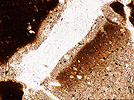
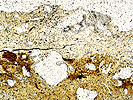 Fe
depleted hypo-coating
Fe
depleted hypo-coating Depletion versus illuviation in hydromorphic soils
Iron depleted hypo-coatings, light colored clay depleted hypo-coatings and coarse textured coatings have similar morphologies, although their origin is very different: eluvial, and therefore formed in situ, for the depletion hypo-coatings, illuvial, and therefore transported from other horizons, for the textural coatings. Therefore it is very important that they are not confounded.
Iron depleted hypo-coatings (neoalbans, sensu Veneman et al. 1967) can be differentiated from the groundmass by their color and Fe content. They always have a lighter color than the groundmass, and a chroma that is at least two units lower. Also the iron content is significantly lower than that of the surrounding groundmass.
The clay depleted hypo-coating (neoskeletans, sensu Brewer) have a coarser texture. The in situ formation of these depletion features is demostrated by the similarity of the sand and silt fraction (mineralogy, granulometry and morphology) compared to the surrounding groundmass.
As the coarse textured coatings (skeletans, sensu Brewer) are formed by transport, their sand and silt components may be different from those of the surrounding groundmass.
Some hydromorphic soils contain bleached illuvial clay coatings (2ª illuviation sensu Fedoroff), resembling iron depletion hypo-coatings, but are of a completely different origin. They can be recognized by a much finer texture, by their interference colors (due to the strong continuous orientation of the clay in agreement with their illuvial origin) and by the sharpness of their boundaries.
ELUVIAL 
 Fe
depleted hypo-coating
Fe
depleted hypo-coating
ELUVIAL 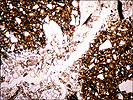
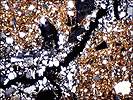 Light colored clay depleted hypo-coatings
Light colored clay depleted hypo-coatings
ILLUVIAL 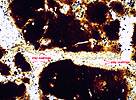
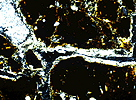 Bleached illuvial
clay coatings
Bleached illuvial
clay coatings